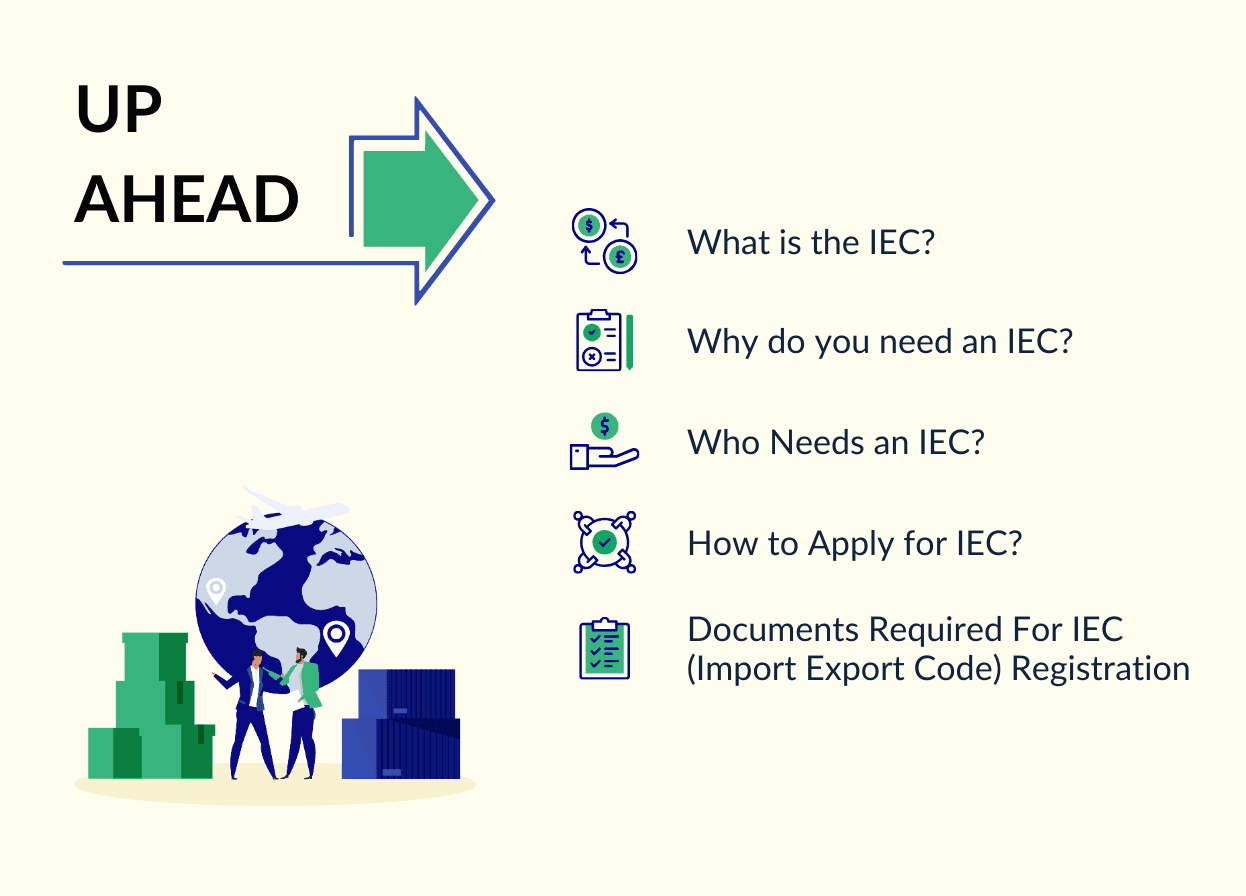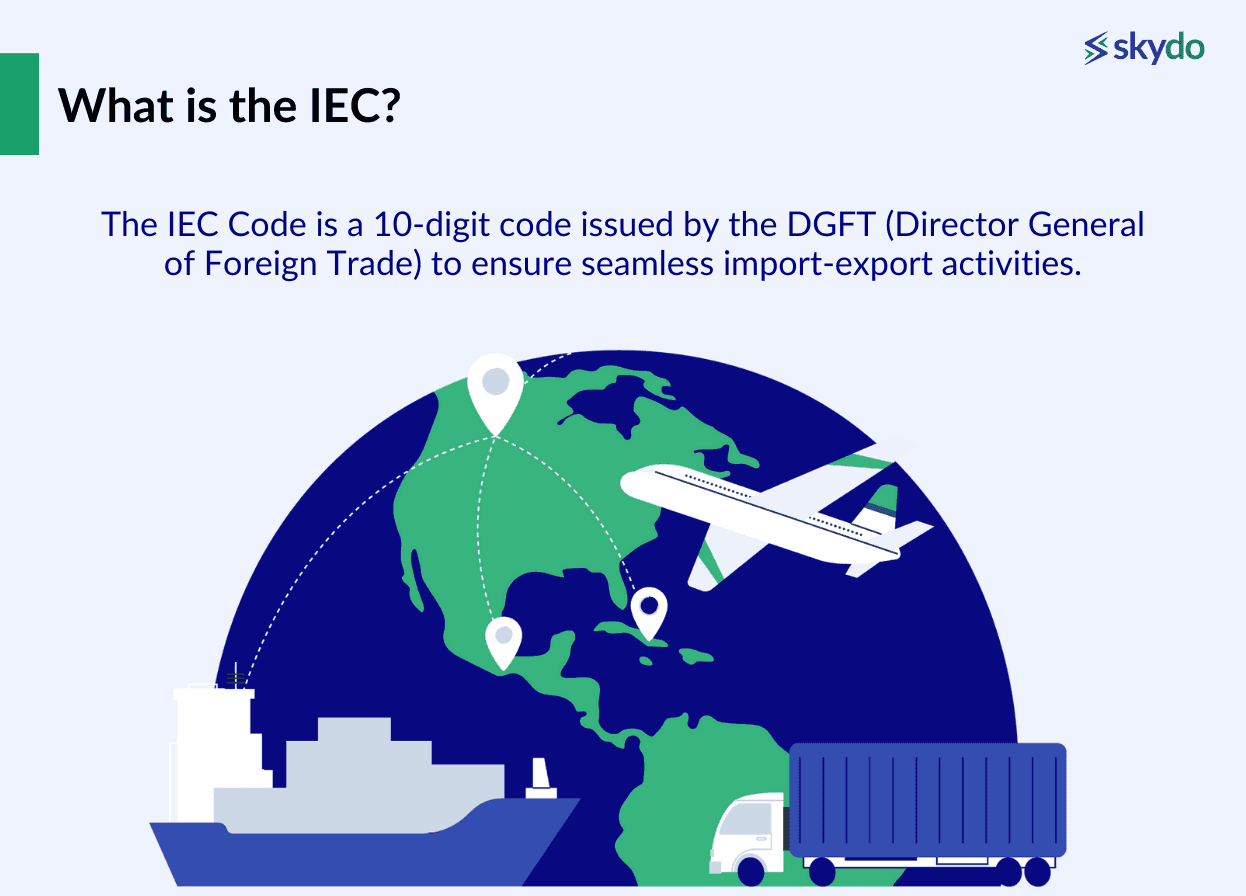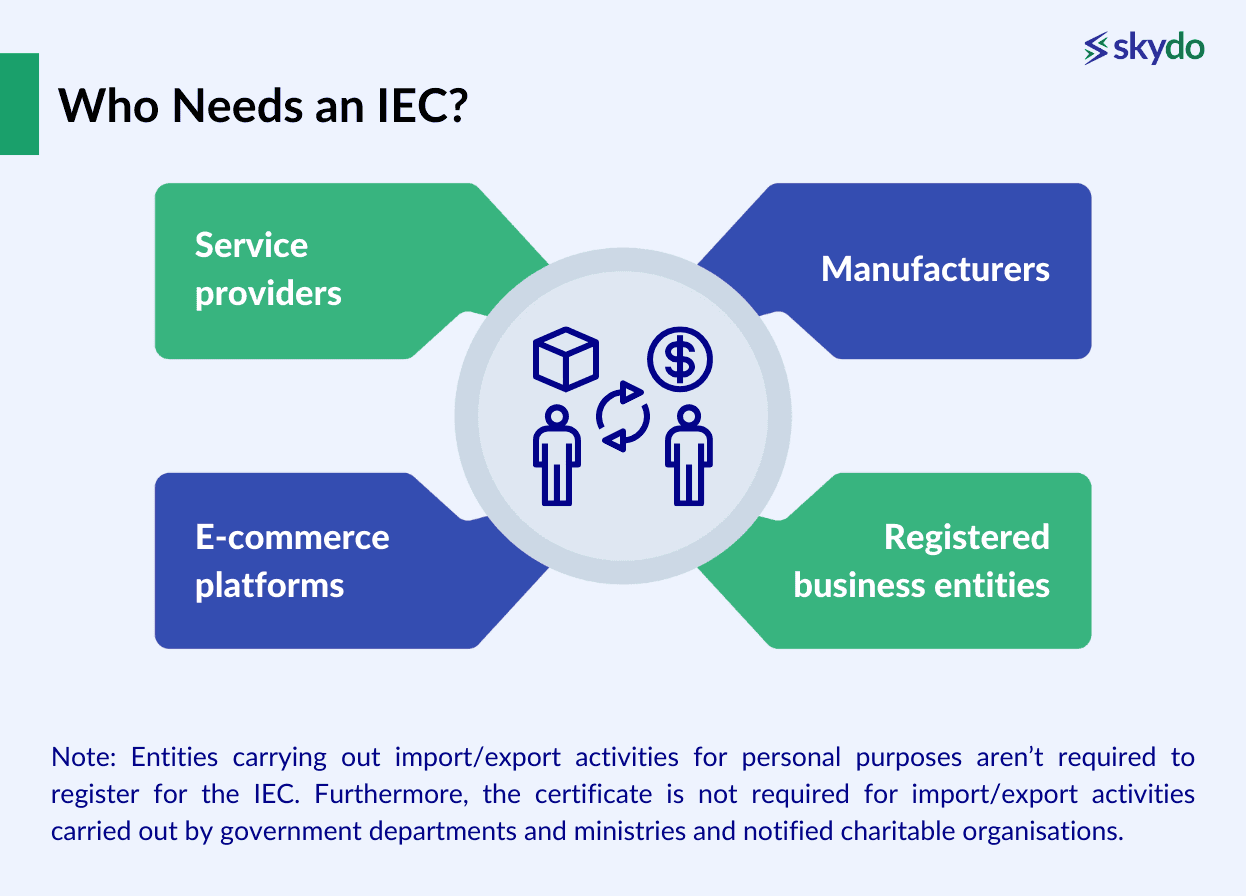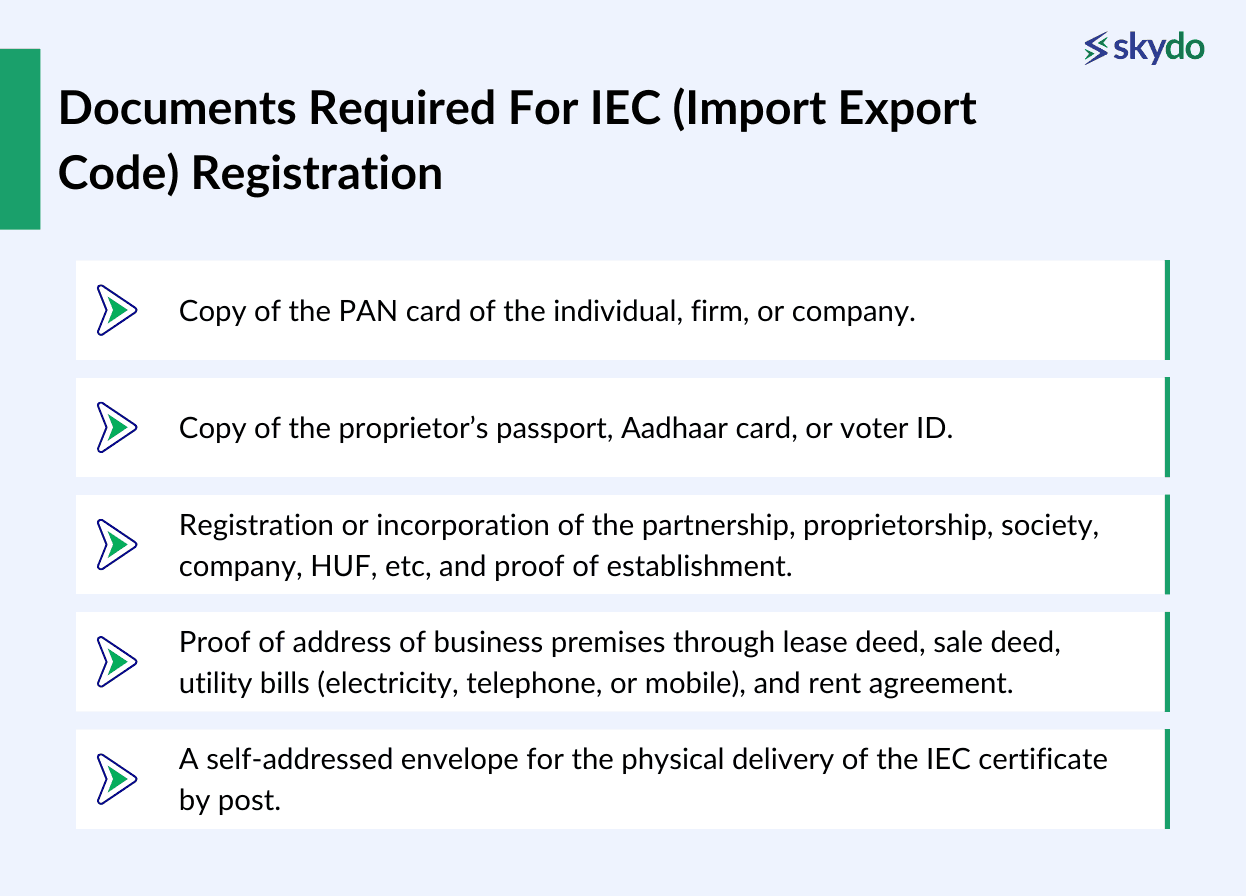Import Export Code (IEC): What You Need to Know



A successful import/export business ensures global expansion, which can result in good earnings. However, every importer or exporter must register for an IEC to execute import/export activities.
If you want to start an import/export business, this blog will help you learn everything you need to know about the IEC.
What is the IEC?
The Import Export Code, also known as the IEC, is a mandatory licence for importers and exporters to carry out import and export activities in India. The IEC Code is a 10-digit code issued by the DGFT (Director General of Foreign Trade) to ensure seamless import-export activities. The IEC Code has lifetime validity post-issuance, and importers and exporters must renew the licence annually. The 10-digit code remains the same throughout the business cycle.

Why do you need an IEC?
The DGFT introduced the DGFT IEC Code to ensure import-exporters can avail various advantages. Here are some of the most common import/export activities where importers/exporters require the IEC registration.

- Effective Compliance: The IEC code ensures compliance with various regulations related to international trade. It adheres to legal requirements and regulations governing import/export activities, avoiding any potential legal issues or penalties.
- Easy Processing: An IEC code registration simplifies documentation by serving as a common identifier for customs clearance, shipping, banking, etc.
- Expansion: The DGFT IEC code ensures that importers/exporters can carry out activities globally without any limitations.
- Availing Incentives: Importers and exporters need an IEC certificate to avail of benefits and incentives offered by the Director General of Foreign Trade (DGFT). These incentives include participation in import-export promotion schemes and access to certain subsidies.
- Customs Clearance: Customs authorities mandate the submission of import-export certificates for clearing imported or exported goods.
- Bank Transactions: Banks require the IEC code when an exporter receives funds in foreign currency into the bank account in exchange for the exports. When an importer sends money abroad or an exporter receives foreign currency, banks require the IEC for documentation purposes.
Who Needs an IEC?
The IEC is mandatory for most import/export activities in India executed by any registered importer or exporter. The 10-digit code is essential for various stakeholders involved in import/export activities, such as service providers, e-commerce platforms, manufacturers, and registered business entities.

Although most import/export activities require the IEC, there are some expectations. According to the latest government circular, IEC is not compulsory for traders registered under GST as they can use their PAN in place of the IEC. Entities carrying out import/export activities for personal purposes aren’t required to register for the IEC. Furthermore, the certificate is not required for import/export activities carried out by government departments and ministries and notified charitable organisations.
How to Apply for IEC?
Here is the detailed process of how to apply for the IEC code:
Step 1: Visit the DGFT (Director General of Foreign Trade) website and click on the ‘Services’ button.
Step 2: Click on the drop-down menu and select the ‘IEC Profile Management’ option.
Step 3: After clicking, a new page will open. Click on the ‘Apply for IEC’ button on the newly opened page.
Step 4: Click the ‘Register’ button and enter all the required details. Once you have entered the details, click the ‘Send OTP’ button. Step 5: You will receive an OTP on your mobile number. Enter the correct OTP and click on the ‘Register’ option.
Step 6: After successful registration, you will receive a temporary password for logging in, which you can change after the first time you log in.
Step 7: Once you have received the password, log in to the website by using the user name and the temporary password.
Step 8: Again, click on the ‘Apply for IEC’ option and click on the ‘Start Fresh Application’ button.
Step 9: Enter the required information and provide details of partner/proprietor/managing trustee/director/Karta with bank details. Attach the Digital Signature Certificate (DSC) and make the required payment.
Step 10: Once you make the payment, you will receive the payment receipt. You can download it for future reference.
Step 11: You will receive the IEC certificate over email after successful payment. You can download the certificate by logging in to the DGFT website and clicking the ‘Print IEC’ button under the ‘IEC Profile Management’ option.
Documents Required For IEC (Import Export Code) Registration
The documents required for the IEC registration process are as follows.

- Copy of the PAN card of the individual, firm, or company.
- Copy of the proprietor’s passport, Aadhaar card, or voter ID.
- Registration or incorporation of the partnership, proprietorship, society, company, HUF, etc, and proof of establishment.
- Proof of address of business premises through lease deed, sale deed, utility bills (electricity, telephone, or mobile), and rent agreement.
- A self-addressed envelope for the physical delivery of the IEC certificate by post.
Conclusion
Understanding everything about the Importer-Exporter Code (IEC) is crucial for businesses aspiring to go into international trade. This 10-digit code, issued by the Director General of Foreign Trade (DGFT), is a gateway to global markets, enabling seamless import and export operations.
It facilitates customs clearance, ensures compliance with international trade regulations, and opens the doors to incentives provided by the DGFT. Its lifetime validity and absence of periodic filing requirements make it a hassle-free asset for those aiming to expand their footprint globally.
FAQs
Q1. How long does it take to obtain the IEC code?
Ans: Getting the IEC code takes 10-15 days after the IEC application submission. It is sent over mail and physically by post.
Q2. How do I activate my IEC code?
Ans: You can activate your IEC code by visiting the DGFT’s website and selecting the ‘Update IEC’ option under the ‘IEC Profile Management’ tab.
Q3. What is the fee for applying and obtaining the IEC certificate?
Ans: The overall fee to apply and obtain the IEC certificate is Rs 500.
Q.4: Is it compulsory to renew the IEC certificate every year?
Ans: Yes, it is mandatory to renew the IEC certificate annually. In case of non-renewal, the IEC license is de-activated, and you can not carry out import/export activities. Once deactivated, visit the DGFT website to re-activate the certificate.





